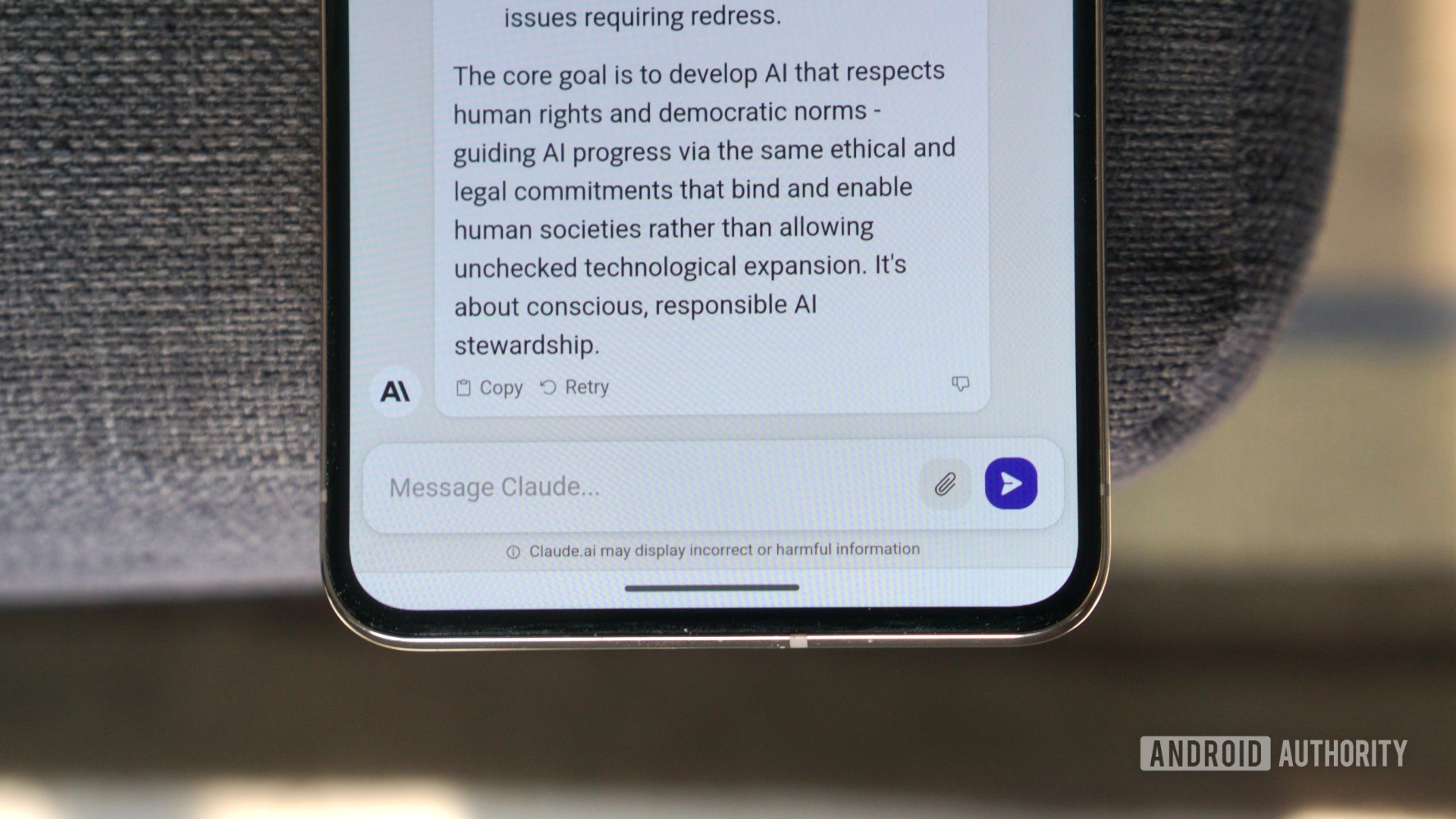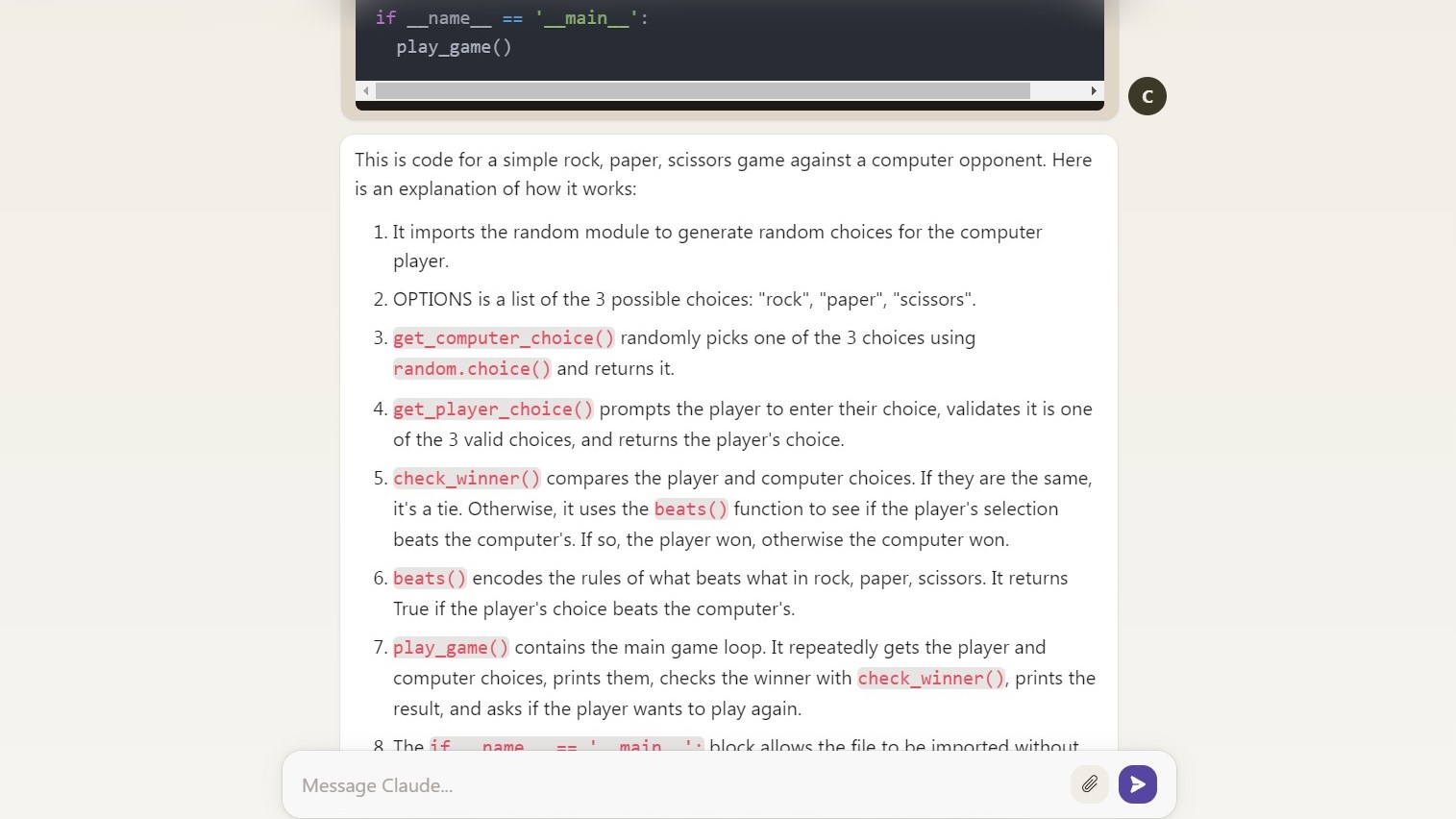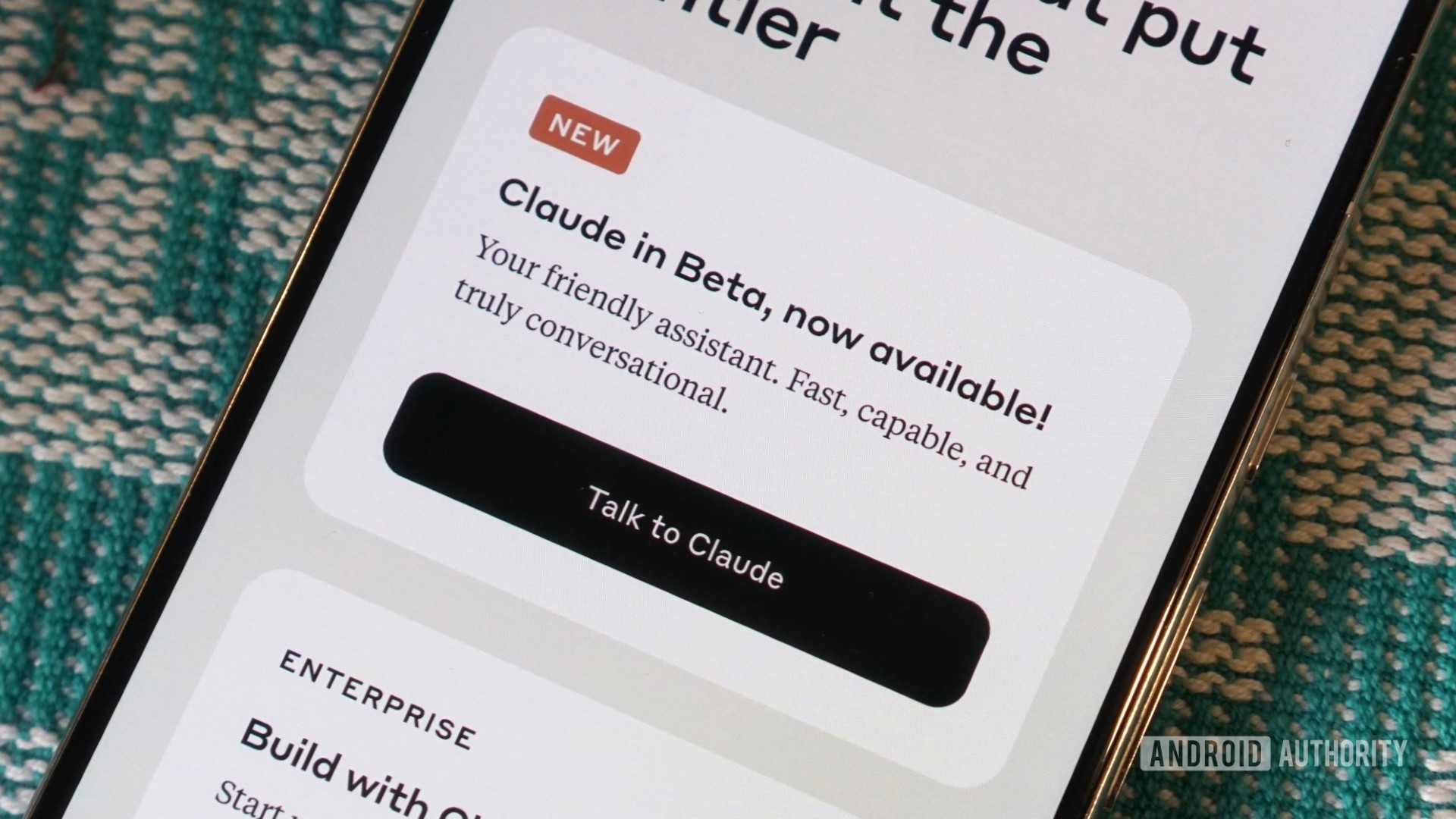Calvin Wankhede / Android Authority
Amidst the AI frenzy fueled by the likes of OpenAI’s ChatGPT and Google’s Bard, it’s admittedly getting harder to muster any enthusiasm for yet another chatbot. That’s exactly how I felt when I heard about Claude — a relatively new chatbot from San Francisco-based Anthropic — for the first time. But while Claude may look like just another chatbot on the surface, dig a little deeper and you’ll find that it follows a unique AI safety-driven philosophy. What does that mean and is Claude a revolution in the crowded chatbot race? Let’s break it down.
What is Claude AI?

Calvin Wankhede / Android Authority
Claude is a large language model-based chatbot, much like ChatGPT or Bing Chat. Its creators designed it with an emphasis on AI safety. According to them, Claude is “helpful, harmless, and honest”. It means that Claude won’t respond in an unexpected way, like we’ve seen from ChatGPT’s hallucinations in the past.
For the most part, Claude looks and responds like just about any other chatbot you’ve probably used in the past year. Some users have reported that it sounds more conversational than its rivals. Claude can also handle complex queries like summarization, coding, and finding patterns in large datasets. Anthropic says the chatbot can handle larger context windows than ChatGPT, which means it can retain more information in longer chats.
Claude looks like ChatGPT on the surface, but aims for a different end-result.
Another factor that sets Claude apart from the competition is its training process. Anthropic dubs its technique “constitutional AI” — essentially a set of human-written principles that the AI must adhere to. Over time, the language model teaches itself to output safer text based on its constitution or founding principles. That’s unlike GPT-4 or other language models, which rely on feedback from humans to keep them from generating harmful text.
Bottom line, Anthropic has developed an AI that has taught itself to play by society’s rules. And therefore, it has a lower dependence on human supervision. Claude is simply the user-facing chatbot version of this AI.
Is Claude AI free to use?
Yes, Claude is completely free to use. As with ChatGPT and most other chatbots, you’ll simply need to sign up for a free account.
Anthropic also offers an optional Pro subscription that costs $20 per month. It allows you to chat with Claude more often, with up to five times the usage limit compared to the free plan. I have run into the rate limit once or twice on the free tier, although shorter back-and-forth messages will stretch your allowance for longer. You will also be the first in line for new Claude-related features and get priority access during high-traffic periods.
Who owns Claude?
San-Francisco startup Anthropic created and owns Claude to this day. Anthropic was founded in 2021, following Microsoft’s increased involvement in OpenAI. The startup’s founding members included former OpenAI VPs of Research, Dario and Daniela Amodei. They were joined by a handful of other ex-OpenAI researchers that worked on the GPT family of language models.
Google and Amazon have invested heavily in Claude’s creator Anthropic so far.
Anthropic has already attracted sizable investments, totalling over $7 billion as of late 2023. Google was a major early investor, with its cloud division trading $300 million for a 10% stake in the company. Amazon would later commit to a $4 billion investment, which likely contributed to Google funding the startup with another $2 billion.
What can Claude do?

Claude AI can do just about anything another chatbot like ChatGPT can, ideally in a safer and more helpful way. It can answer questions, generate creative content, write and explain code, translate between languages, and engage in general back-and-forth conversation. This means you can enter a prompt like “Write a short story set in a cyberpunk megacity where robots and humans coexist” and then ask for improvements beyond that.
However, Claude cannot access the internet (even if you pay for the Pro plan) to access up-to-date information. Giving the chatbot access to the internet goes against Anthropic’s ethical principles to limit its exposure to potentially dangerous content. Therefore, Claude only knows about events leading up to late 2022 unless you upload your own documents while chatting with it. More on how to do that in a later section.
Claude vs ChatGPT: Is Anthropic’s AI better than GPT-4?

Calvin Wankhede / Android Authority
Despite how similar they might look on the surface, Claude and ChatGPT differ quite a bit under the hood. Here’s a table that compares them on a technical level.
| ChatGPT | Claude AI | |
|---|---|---|
|
Training method |
ChatGPT
Reinforcement learning from human feedback |
Claude AI
Self-supervised from Anthropic’s Constitutional AI framework |
|
Document uploads |
ChatGPT
Yes, paid subscription required |
Claude AI
Yes, included in free tier |
|
Internet access |
ChatGPT
Yes, paid subscription required |
Claude AI
Not permitted, even with paid subscription |
|
Response style |
ChatGPT
Informational, digital assistant |
Claude AI
Conversational, shorter default responses |
|
Languages |
ChatGPT
Wide language support due to diverse training data |
Claude AI
Officially English and “common languages” |
|
Privacy |
ChatGPT
User chats saved for future training by default |
Claude AI
User chats not used for training |
|
Message limits per day |
ChatGPT
Higher |
Claude AI
Lower, may increase over time |
As for real-world use, I’ve found that Claude performs just as well as GPT-3.5, or ChatGPT’s free tier. It’s not quite as good as the more advanced GPT-4, however, especially as it cannot access up-to-date information from the internet.
How to access and use Claude?

Calvin Wankhede / Android Authority
While you once needed Slack to access Claude, it’s now also available as its own independent app on the web. Here’s a step-by-step guide on how to use the chatbot:
- Navigate to claude.ai, enter your email address, and click “Continue”.
- Check your email for a login confirmation code and enter it to proceed.
- Fill out your name and accept Anthropic’s terms and privacy policy after reading them.
- Finally, enter and verify your phone number.
- That’s it! You can now start chatting with Claude for free. The main interface looks just like ChatGPT — simply enter your prompt and hit send. Wait for the chatbot to finish responding before sending in another message or asking it to regenerate its response.
You can also upload your own documents for Claude to analyze by clicking on the attachment icon right within the text box. The app will automatically extract the text from your document and send it to the chatbot alongside your prompt. For example, you can ask it to answer specific questions about a long document’s contents or just summarize the whole thing. Note that Claude cannot handle Excel or XLS files yet, but you can upload structured data in the csv format as a workaround.
Yes, Claude is available on the iOS App Store. It’s unclear if an Android app will arrive soon.
No, Claude cannot generate images. You’ll need to use a different chatbot or AI image generator instead.
No, Claude is not an open source chatbot nor is the underlying language model freely available.
Claude’s creator Anthropic prides itself on using safer training techniques than rival AI chatbots but that comes at reduced functionality like being unable to access the internet.











